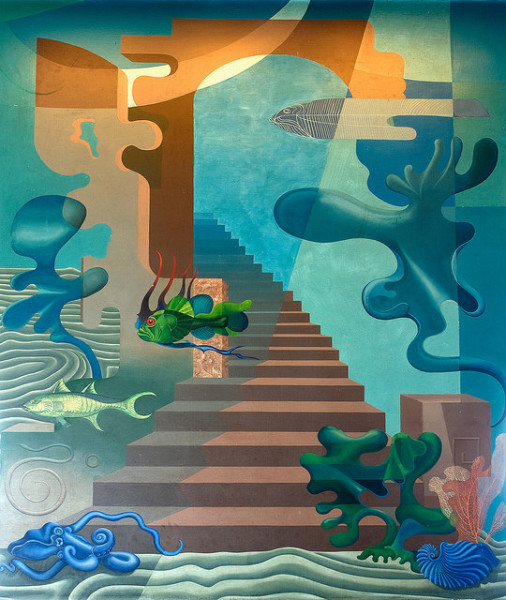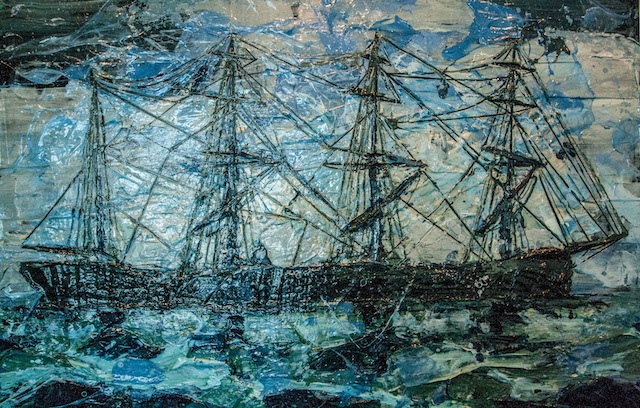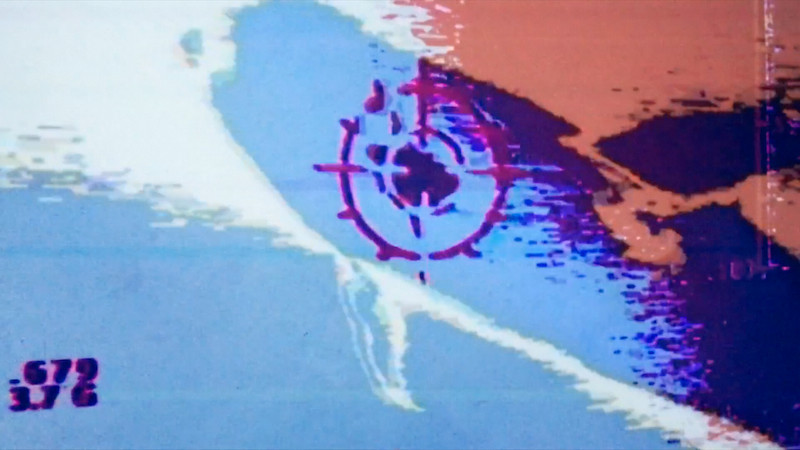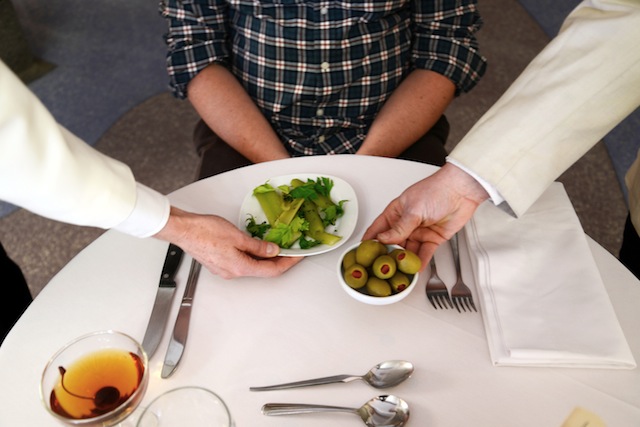On San Francisco’s north shore, just beyond Ghirardelli Square, sits the Aquatic Park Bathhouse. Part of the San Francisco Maritime National Historical Park, this Streamline Moderne building, which vaguely resembles a ship, overlooks a sandy cove, historic boats, Alcatraz Island and the Golden Gate. The architecture is modest, but it houses elaborate and alluring nautical art.
Opened in 1939, the bathhouse was built by the New Deal–era Works Progress Administration (WPA), who hired artists Hilaire Hiler, Sargent Claude Johnson and Beniamino Bufano to create murals, mosaics and sculptures for the site. Honoring this tradition of public art, We Players, a Bay Area theatre company committed to “site-integrated” performances, produced A New Deal: Continuing the Legacy of Maritime Art in the Park, an exhibit of conceptual art, painting, video and performance documentation.
We Players is most well known for their theater productions; Hamlet on Alcatraz and Macbeth at Fort Point. But visual arts has been a component of their work since a residency on Alcatraz, when they discovered an unused room and convinced park staff to let them to curate an exhibition there. Ava Roy, We Players’ artistic director and founder, says the visual arts programming operates as a companion to their theater productions. Such programming, she says, “provides another access point, especially for regular park visitors who aren’t going to encounter the full scale production.”

A New Deal is the first exhibition in a five-year partnership between the National Historical Park and We Players. While the WPA artists depicted fantastical Atlantis and pleasant representations of marine life, the eight contemporary artists in A New Deal address themes of militarism, violence and conflict in their work, interpreting the site and the city’s maritime history in a considerably different light.
Justin Carl Hurty presents an elusive multimedia installation about a man, Paul Smith, who may or may not exist. Smith is identified as a former naval pilot, vodka martini drinker and anti-communist. The centerpiece of the installation is a video of overlapping negative images in patriotic red, white and blue. In the video, fighter jets take off from an aircraft carrier and streak across the screen as crosshairs trace their paths. Sonar searches the ocean for threats as dolphins and whales swim in the sea. These scenes of naval violence are juxtaposed with the real-life sounds of children playing on the beach outside the bathhouse.

Painter Monica Lundy learned from the park’s archive of a notorious nineteenth-century ship called the May Flint, whose captain was often accused of cruelty. The ship itself was regarded as “the ugliest square rigger that ever sailed the seas” by maritime historian Basil Lubbock. The sole painting in A New Deal, Lundy’s May Flint (portrait of a hell ship) (2015) recreates the nightmarish ship in a thick and ghostly wood-panel painting that overlooks the actual site of the subject’s shipwreck in 1900, reminding viewers how vicious these waters once were. The sunny, circular Prismatorium room where most of the work is displayed creates a direct connection between the art and the site.



